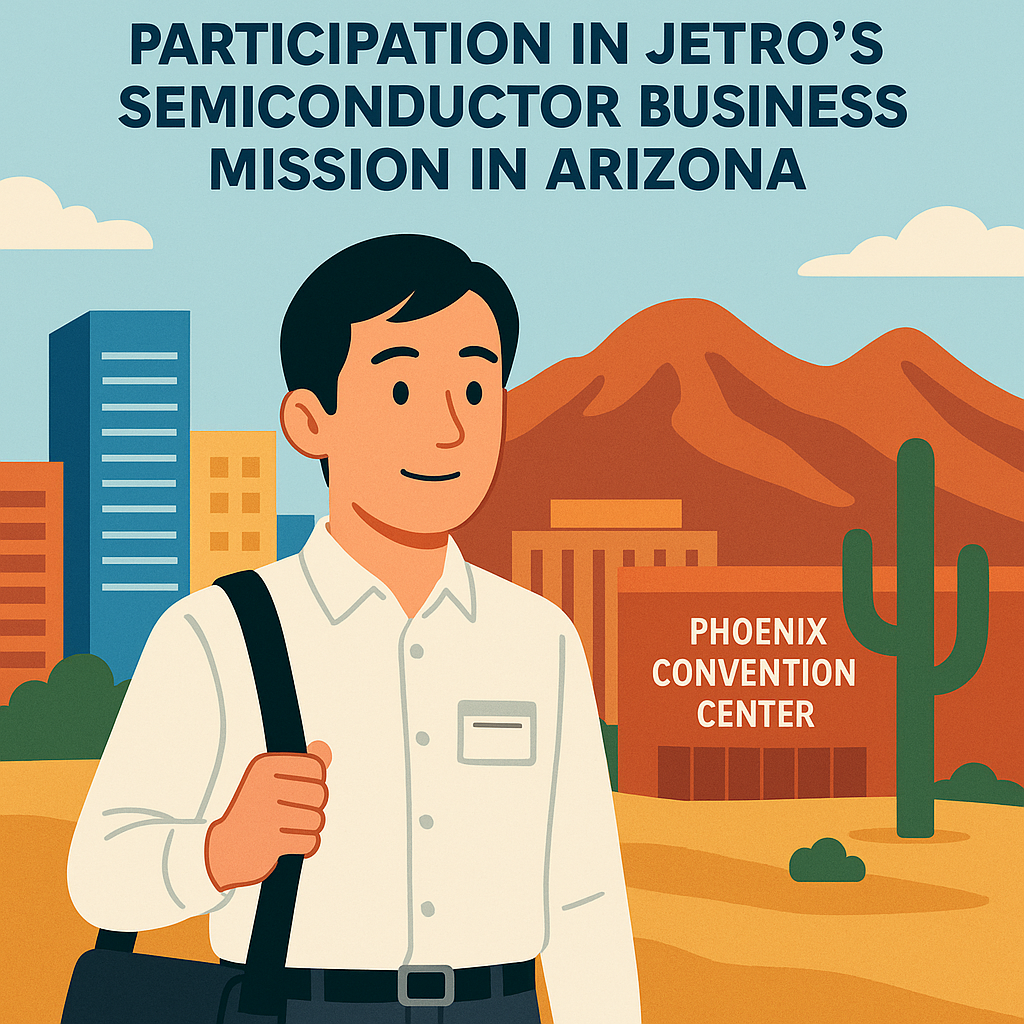I had the privilege of joining the Japan External Trade Organization (JETRO)’s Semiconductor Business Mission in Arizona, held from October 5 to 7, 2025. Participants were also invited to attend SEMICON WEST 2025, which took place at the Phoenix Convention Center from October 6 to 9. Below are some highlights and impressions from this meaningful experience.

October 5 – Orientation and Networking Reception Hosted by JETRO
Around 50 participants and JETRO representatives gathered at Pedal Haus Brewery in downtown Phoenix for an evening orientation and networking session. The JETRO team explained the mission’s schedule and key points, followed by a reception that provided valuable opportunities to connect with other participants.
I met professionals from various fields, including semiconductor material manufacturers, logistics service providers, specialty material startups, chemical companies, banks, and heavy industry firms. It was also a pleasure to reconnect with several participants and JETRO staff I had met during the Quantum Mission held in June. (See our previous blog post)
October 6 – Arizona Semiconductor Leadership Day
The Arizona Commerce Authority (ACA) and the Greater Phoenix Economic Council (GPEC) hosted the Arizona Semiconductor Leadership Day, attended by industry leaders, suppliers, trade associations, and government officials participating in SEMICON WEST.
Speakers included the Governor of Arizona and the Mayor of Phoenix, who shared insights into the region’s economic landscape. Panel discussions followed, featuring representatives from various regional economic development organizations. Key themes included:
- Strong collaboration among local and state-level agencies,
- Comprehensive support programs for companies establishing operations in Arizona,
- A robust and modern infrastructure with minimal natural disaster risks, and
- Direct flights from several Asian countries to Phoenix Sky Harbor International Airport.
Panels featuring representatives from TSMC, Amkor, and Intel discussed their decisions to build fabs in Arizona and the advantages of operating there. Additional sessions included representatives from Arizona State University, The University of Arizona, and Northern Arizona University, highlighting close collaboration between academia, industry, and government in semiconductor R&D. Representatives from Maricopa Community Colleges, Central Arizona College, Pima Community College, and Grand Canyon University also discussed workforce development initiatives essential to the semiconductor ecosystem.
October 6 – Networking with the Japan Business Association of Arizona (JBAA)
In the evening, participants joined a networking event with members of the Japan Business Association of Arizona (JBAA) at the ACA building. After learning about JBAA’s activities, we had an engaging exchange with local Japanese business leaders.
October 7 – Japan Forum at SEMICON WEST
Within SEMICON WEST, the Consulate-General of Japan in Los Angeles, JETRO, and the Japanese Chamber of Commerce and Industry of Arizona (JCCIAZ) co-hosted the Japan Forum. JCCIAZ representatives presented Arizona’s strengths as a business environment and introduced Japanese companies active in the state’s semiconductor sector.
During the luncheon, Professor Suganuma from the University of Osaka introduced research on automotive-grade 3D packaging and the Advanced SoC Research for Automotive (ASRA) consortium. Professor Ikeda from the University of Tokyo discussed the forefront of semiconductor design research and education in Japan, while Mr. Nakazawa from RISE-A explained the organization’s mission to strengthen Japan’s semiconductor ecosystem.
The forum concluded with a reception, offering another excellent opportunity to network with many semiconductor industry professionals.
Impressions
I arrived in Arizona on the morning of October 5 and spent a few hours in Chandler, guided by my father-in-law who lives there. I was struck by the number of Waymo driverless taxis and the vibrant development of modern homes, apartments, and retail areas—a clear reflection of the region’s strong economy.
The close collaboration among state and local governments, universities, community colleges, and industry has clearly fostered Arizona’s rapid semiconductor growth.
At the Japan Forum, I learned that Japanese companies hold approximately 20% of the global share in semiconductor manufacturing equipment and 50% in materials supply—valuable insights for TSG U.S.A., Inc., as we are engaged in product design utilizing semiconductors.
Overall, the mission provided not only rich networking opportunities but also first-hand understanding of the enthusiasm and commitment driving Arizona’s semiconductor industry. It was a truly rewarding experience.






